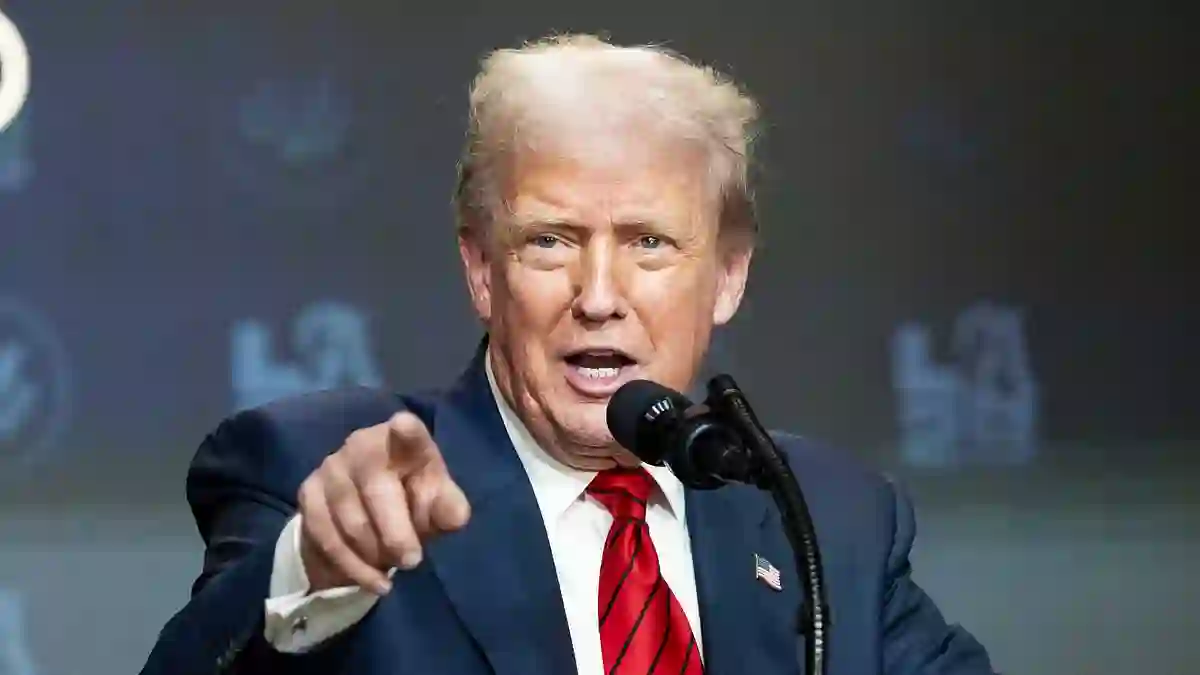After weeks of back-and-forth with dozens of countries, former President Donald Trump finally pulled the trigger on a sweeping set of tariffs that officially kicked in at midnight.
Over 60 nations are now facing steep new trade fees, following Trump’s much-hyped “Liberation Day” threats and 18 weeks of tense negotiations.
No More Extensions—Tariffs Are Live
Last week, Trump gave a few countries a final grace period to strike a deal, but that deadline has now passed.
As the clock struck midnight, the tariffs came into effect—some reportedly reaching as high as 50 percent on goods from countries Trump claims have “unfair” trade relations with the U.S.
In a post just 15 minutes before the new rules began, Trump took to Truth Social to make it official:
“RECIPROCAL TARIFFS TAKE EFFECT AT MIDNIGHT TONIGHT!”
He didn’t hold back on the rhetoric, either.
“BILLIONS OF DOLLARS… WILL START FLOWING INTO THE USA,” he wrote.
“THE ONLY THING THAT CAN STOP AMERICA’S GREATNESS WOULD BE A RADICAL LEFT COURT THAT WANTS TO SEE OUR COUNTRY FAIL!”
Brazil Hit Hard Over Bolsonaro Conflict
One of the first countries feeling the weight of Trump’s new policy is Brazil.
The South American nation now faces up to 50 percent tariffs on many of its exports.
According to Trump, this is a direct response to Brazil’s president refusing to stop the prosecution of former leader Jair Bolsonaro—whom Trump supports.
Still, some products from Brazil were spared. Items like aircraft, pig iron, energy, wood pulp, orange juice, and fertilizer were exempted from the order.
But major exports like beef and coffee? Not so lucky.
India Faces Double Tariff Blow Over Russian Oil
India also finds itself in hot water. Trump has already slapped a 25 percent tariff on Indian goods earlier this month, and now he’s doubling down.
An additional 25 percent will be added on August 27, bringing the total tariff burden to a whopping 50 percent.
The reason? Trump claims India is helping “fuel the war machine” by buying Russian oil—something he blasted in an interview on CNBC just days ago.
Canada and Mexico Get Mixed Treatment
Canada hasn’t escaped Trump’s new measures either. A 35 percent tariff is now in place—but there’s a catch.
Goods that fall under the USMCA trade agreement are not included in the new charges.
Mexico, on the other hand, was given a bit more breathing room with a 90-day extension while negotiations continue behind the scenes.
Who Else Is on the Tariff List?
More than 60 countries are impacted, and not all have secured a deal with the U.S. yet. The list includes:
-
Switzerland
-
South Africa
-
Brunei
-
Cambodia
-
Bolivia
-
Ecuador
-
Iceland
-
Nigeria
-
Sri Lanka
-
New Zealand
-
Turkey
-
Norway
-
Iran
-
North Korea
-
Russia
Meanwhile, U.S.-China trade talks are still in motion.
Both sides agreed to keep talking until August 12, after productive meetings last month in Stockholm.
Deals With the UK, EU, and Japan Bring Some Wins
While tensions remain high with many countries, Trump did manage to score a few wins.
In late July, he finalized deals with both the United Kingdom and the European Union, which he says will funnel billions of dollars into the U.S. economy.
Earlier in July, a massive $550 billion deal with Japan was also confirmed.
Consumers Might Feel the Squeeze
With such broad tariffs now in place, there’s growing concern that everyday Americans could start seeing price hikes.
Items like food, clothing, cars, electronics, steel, copper, and aluminum are all affected.
So far, many U.S. importers have been absorbing the extra costs themselves, but they warn it’s not sustainable for the long haul.
If this keeps up, those costs might get passed on to shoppers sooner rather than later.
Tariff Revenue Keeps Climbing
Despite the potential risks, Trump and his administration are boasting about the financial upside.
According to Treasury Secretary Scott Bessent, the U.S. has already brought in $152 billion in tariff revenue this year—and they’re projecting it could reach $300 billion by December.
Trump Doubles Down on Tariff Popularity
In his CNBC interview this week, Trump defended his approach, claiming that “people love the tariffs” because they love seeing the U.S. finally standing up to foreign countries.
“For years, they ripped us off—friend and foe,” Trump said. “And the friend was worse.”
As his economic strategy continues to shake up global markets, one thing’s for sure: Trump’s tariffs have officially gone from threat to reality—and the global response is only just beginning.
